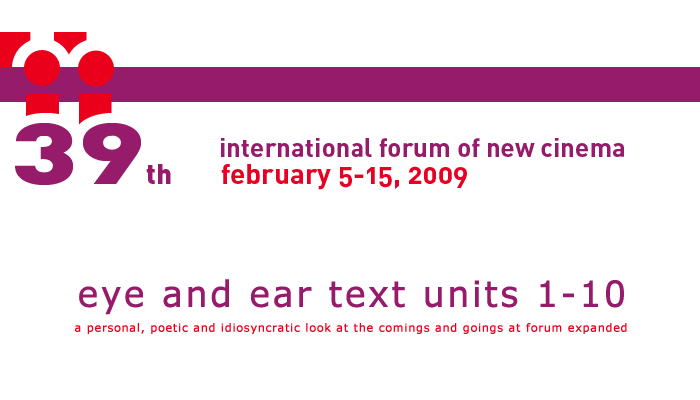Looking at the window of the filmhaus at Sony Center you can see on the left hand corner an installation by Ludwig Schönherr where he filmed in 16mm off the television. You see Speed matching its times. The speed of the edit or exposure shows us girls, fashion, automobiles and freeways, politicians and celebrities. All shot from 69-70. The speed of those times meets the speed of structural films, where theory is somehow in synch with art and technology. I am speaking here of the events of 68 and the texts of the situationists in there theories of Spectacle. Television, Internet seem to be a little late in the game for pure speed.
But if Schönherr’s films record the spectacle with a pace equal to Debord’s theory of lived experience replaced by spectacular representation, unlike Debord, Schönherr seems to look at that fevered time without separating into judgments. Fashion sits on par with John and yoko’s peace bed, freeways are given the same exposure as speeches, and his critique seems to be in the form. The nervous, frantic, fearful and beautiful pace of the films records what he sees. All of the above.
Also in a historical context is the installation, Factory of Gestures on the first floor of the filmhaus. 7 monitors sit side by side organized by themes that examine how film has used the human body from 1910 to the contemporary, examining categories of beauty or physical gestures such as an upraised palm in an attempt to see what those gestures and acts have meant and have changed over time.
Birgit Hein’s photos from the late 60s to early 70s show a community contemporary to Schönherr’s. In these photos we do not see artists working but simply living. A naked child, friends socializing and informal snapshot photos. The faded and touching photos are touching in the way that I can trace MY history and lineage from one generation to the next. The theme of the Material of things like television and film inevitably exposed my own history, my personal vision of a Big Bang.
At times I have made flicker films, to begin with having never heard of them or seen them. I also have been accused of being a structuralist without knowing what such a creature was. I always have believed in disorientation, speed and saturation as artistic and political principals. But in making works that have sometimes been similar to those who have made them before me, I could care less for originality. I have always felt like a fractured mirror or broken disco ball, whose reflective surfaces are actually eyes in search for kindred spirits, and maybe all our works over time are like bonfires wanting to be found. I want to be next to the heat.
So to come back to my generation in this weird family tree I would like to mention that in works we can speak to each other from one generation to the next and close the gap in real time. The works of Marie Losier in the lobby of the Arsenal do this with form and content. Genesis P. Orridge, for example was a huge influence on me and what I make. I saw her face either trying to get out of the little house Marie had made for her, or taunting me to get inside.
Hmmm….. in this poetic lineage I have found generations of gangs, clans, groups of artists who made things before me and now adorn my own imagination like some incredible palace of perversity. Did all this happen because my first memory is watching on television the assassination of Robert Kennedy?
Subscribe to:
Post Comments (Atom)



No comments:
Post a Comment